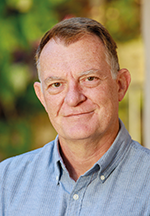

Last month I had the opportunity to go away for a long weekend into the Gwahumbe Valley in Kwazulu-Natal. By midday on Friday, the car had been packed and we set off.
With prior knowledge of where we were going, I had packed accordingly: an axe, a gas lighter, and a portable power supply unit was tucked away in the boot of the car. I knew what to expect.
After an hour of driving, we passed a signpost that read ‘Cell phone comms ends here,’ and we hit a rough 4x4 dirt track for another 30 minutes down into a valley that only has one way in and one way out. Surrounded by cliffs that were becoming higher and steeper as we slowly drove on, I marvelled once again at the small screen on the dashboard showing not only my exact position on the track, but also where I needed to be headed. The marvellous part was that even though we had absolutely no cell phone reception for either calls or data, the GNSS unit still worked flawlessly, receiving the signal from its multiple satellites orbiting us.
You may wonder why this system intrigued me. After all, consumer GPS receivers have been around for the better part of 20+ years. Well, to be driving in an area with steep canyon walls would have rendered a typical GPS receiver useless fifteen years ago. The dreaded ‘signal lost’ message would have been displayed and nothing else on the unit would have worked after that.
Roll on 15 years and we now have GNSS chipsets embedded in navigational systems that can receive signals from multiple constellations, and they work like a dream. The GNSS unit I was using was a Quectel L76 receiver talking via UART to an ESP32 microcontroller which was connected to a 5-inch touchscreen display (I know these details as I had designed, built and programmed the system myself during a rare day of downtime).
The L76 being used has 99 acquisition channels and can track 33 concurrent channels, supporting four different constellations. Even in the dense valley we found ourselves in, I was still locked onto and receiving the signal from a minimum of eight satellites, more than enough to calculate an accurate position. This would not have been possible years ago when these extra constellations did not exist. The circular indicator on the previously recorded track was rock steady and after 30 minutes of bumping around, we reached the destination in the valley.
The small camp’s lighting is entirely powered by 12 V. Hence, the addition of the portable power supply in the boot. With everything else running on gas, we enjoyed a peaceful sojourn, recharging our ‘biological batteries’.
Wireless communication systems are a wonderful modern invention, but the fact is they do not reach everywhere yet. Satellite signals do, however, and I, for one, am excited at the prospect of future phones being able to receive a satellite signal for communication.
| Tel: | +27 11 543 5800 |
| Email: | [email protected] |
| www: | www.technews.co.za |
| Articles: | More information and articles about Technews Publishing |

© Technews Publishing (Pty) Ltd | All Rights Reserved